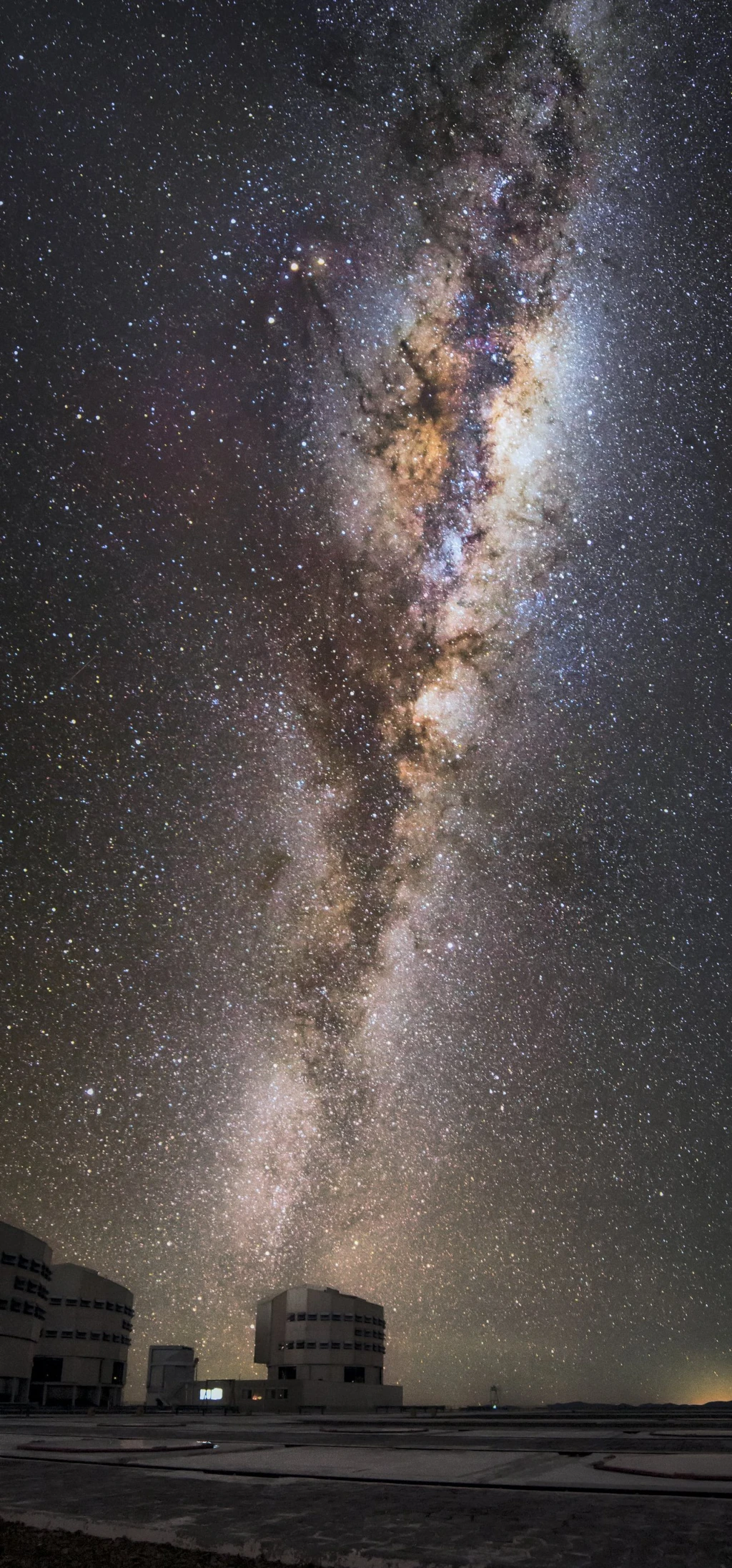
The Milky Way is the name given to the bright band that stretches across the night sky. What we see is actually our own galaxy viewed from within, from our position in one of its spiral arms. This band contains hundreds of billions of stars whose collective light creates this characteristic whitish streak. Yet, most people have never seen the Milky Way with their own eyes. Why does this celestial wonder so often elude us?
To understand why the Milky Way changes appearance throughout the year, we must consider three fundamental axes that determine what we see in the night sky.
The Milky Way is a flat spiral galaxy, like a disk. This disk of stars defines what is called the galactic plane. The galactic axis is the perpendicular line passing through the center of this disk.
We are inside this disk, in one of its spiral arms, about 26,000 light-years from the center. When we look along the plane of the disk, we see the milky band of the Milky Way. When we look perpendicular to the disk (along the galactic axis), we see far fewer stars.
This galactic axis has a fixed orientation in space. The center of the galaxy is located in the constellation Sagittarius, about 29° below the celestial equator.
The ecliptic is the plane of Earth's orbit around the Sun. Its axis is perpendicular to this orbital plane.
The galactic plane and the ecliptic plane are not aligned. They are tilted relative to each other by about 60°.
Earth rotates on its axis every 24 hours, which passes through the North and South geographic poles. This axis is tilted by about 23.5° relative to the ecliptic axis, which explains the seasons.
This rotational axis determines what is visible above your local horizon at any given time: Earth's rotation makes the night sky "turn" above you, from east to west, in one night.
During a single night: Earth's rotational axis makes the sky turn. The galactic plane, fixed in space, thus appears to "pivot" above you. At the beginning of the night, the Milky Way may be horizontal near the horizon, then become vertical around midnight, and descend back toward the horizon at dawn.
Throughout the year: Earth moves along the ecliptic around the Sun. At night, we look in the direction opposite the Sun. Since the galactic plane is tilted 60° relative to the ecliptic plane:

Northern Hemisphere: The best nights to see the galactic center are from April to September, peaking in July-August. During these summer months, Sagittarius (where the center is located) is visible in the night sky, especially between 11 PM and 4 AM.
Southern Hemisphere: The galactic center is visible for much of the year, but the best conditions are between February and October. In the southern winter (June-August), the galactic center passes overhead at midnight, offering spectacular views.
| Latitude | Hemisphere | Milky Way Visibility | Appearance at 00:00 | Appearance at 04:00 | Maximum Altitude of the Galactic Center | Comment |
|---|---|---|---|---|---|---|
| 0° | Equator | Excellent | Vertical ~90° | Inclined ~60° | ~61° | The galactic plane passes high in the sky, almost at the zenith |
| +15° | North | Very Good | Very vertical ~80° | Inclined ~50° | ~46° | The galactic center is clear but not dominant |
| -15° | South | Excellent | Very vertical ~85° | Inclined ~55° | ~76° | The galactic core approaches the zenith |
| +30° | North | Very Good | Vertical to inclined ~70° | Inclined to lying ~40° | ~31° | Center still low, moderate visibility |
| -30° | South | Exceptional | Very vertical ~90° | Inclined ~70° | ~89° | The central bulge almost at the zenith |
| +45° | North | Good | Inclined ~60° | Lying ~30° | ~16° | Center very low, reduced visibility |
| -45° | South | Excellent | Vertical ~80° | Inclined ~50° | ~61° | Center high and contrasted |
| +60° | North | Average | Inclined ~45° | Lying ~20° | ~1° | Galactic center almost at the horizon |
| -60° | South | Very Good | Vertical ~75° | Inclined ~55° | ~59° | Excellent exposure to the central bulge |
| +75° | North | Poor | Lying ~10° | Lying ~5° | ~0° | The center remains below or on the horizon |
| -75° | South | Good | Inclined ~40° | Lying ~15° | ~44° | Still good access to the heart of the galaxy |
| +90° | North Pole | Very Poor or Impossible | Lying ~0° | Lying ~0° | ~-29° | Galactic center below the horizon, invisible |
| -90° | South Pole | Poor | Lying ~10° | Lying ~5° | ~13° | Galactic center low but partially observable |